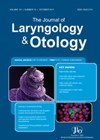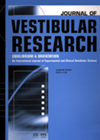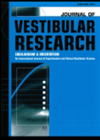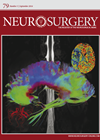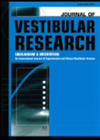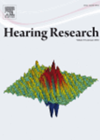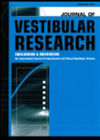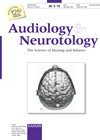
Journal Reviews
Associated findings in MRI used for detecting acoustic neuroma
Presently, gadolinium enhanced magnetic resonance imaging is the ‘gold standard’ for investigating acoustic neuroma. There are often ‘incidental’ findings that may or may not be significant. In this study of 109 scans, the authors noted an uptake of 0.9% for...
The video head impulse test: an aid to the diagnosis of spinocerebellar ataxias
Spinocerebellar and Friedreich ataxias (SCA and FA) by their nature present in neuro-otology clinics. The diagnosis is ultimately genetic but the authors investigated the characteristics of the VOR using the video head impulse test (vHIT) in order to distinguish between...
Posturography in persistent postural-perceptual dizziness (PPPD)
Those in neuro-otology practice will be familiar with PPPD now appearing in the forthcoming beta edition of ICD-11. This condition combines the symptoms of phobic postural vertigo and chronic subjective dizziness in which anxiety plays a part. The underlying hypothesis...
Preserving hearing in NF2 patients
Neurofibromatosis type 2 (NF2) is known to result in bilateral hearing loss, even when there is no significant tumour growth. The cause is postulated to be multifactorial: stretching and compression of the cochlear nerve by the tumour, impairment of labyrinthine...
How effective is vestibular rehabilitation in bilateral vestibular failure?
In patients with bilateral vestibular hypofunction (BVH), the outcome of vestibular rehabilitation is mixed. The aim of the study was to identify factors associated with outcome of vestibular rehabilitation (VR) in patients with BVH. A retrospective case notes review identified...
Otolith dysfunction in congenitally deaf adults
This paper helps to further define the profile of ocular and cervical vestibular-evoked myogenic potentials (o and c VEMPs) in patients with congenital profound sensorineural hearing loss (PSHL). It highlights the prevalence of otolith (saccular and utricular) dysfunction that exists...
New diagnostic criteria for Ménière’s disease – an international consensus
Most readers are familiar with the American Academy diagnostic criteria for Ménière’s disease (MD) but a significant minority will be aware of other criteria from Japan and Korea. This new effort is a collaboration between these three bodies and the...
Vestibular functions of hereditary hearing loss patients with GJB2 mutations
Mutations of the GJB2 gene are a common cause of deafness, being found in 15-25% of cases of congenital deafness. Over 100 mutations are now recognised and may be associated with a hearing loss ranging from mild to profound. This...
Selective otolith dysfunctions objectively verified
Three cases of patients with acute onset vertigo are presented here. The presenting symptoms are described for each case along with the results of vestibular and audiologic examination. This paper focuses on the results of vHIT in the plane of...
Alcohol and the vestibulo-ocular reflex (VOR)
I was drawn to this paper initially for slightly unscientific reasons but in fact it proved a worthwhile read. It describes the effect of alcohol consumption on the VOR of eight healthy subjects as measured using video head impulse testing...

